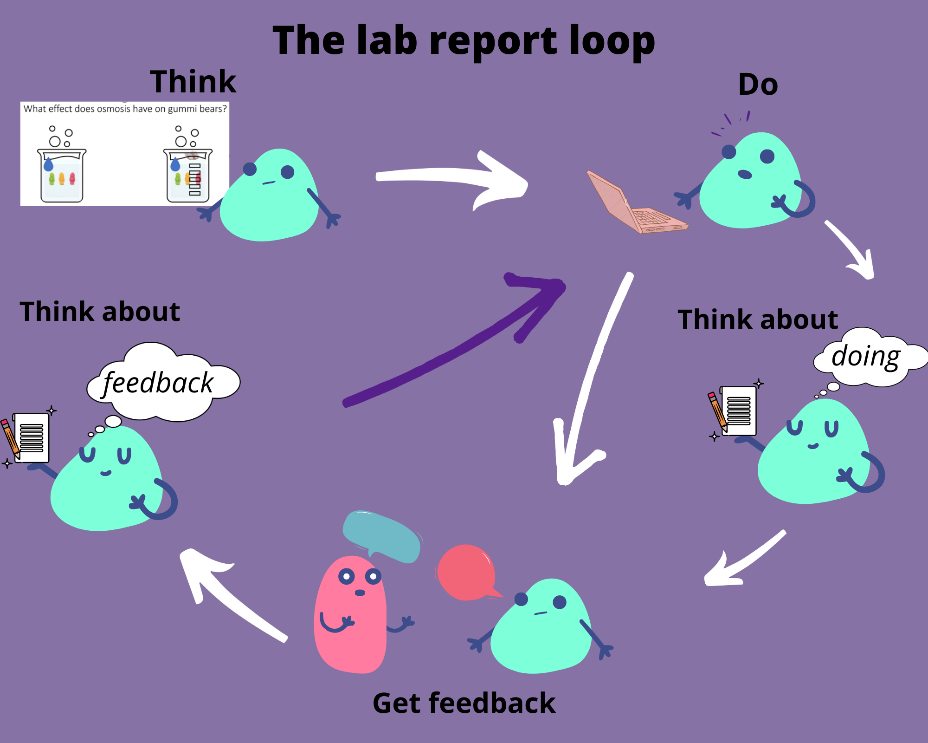Dr Sam Hopkins – School of Biosciences and Medicine
On the Bioscience’s foundation year, we have a joined-up approach to our programme. One of the assessments students do in the first semester is write a lab report. This is a new experience for most students, so we go step-by-step through the process of conducting an experiment and writing a report over the whole of Semester 1. To do this we use the topics students are learning the same week to give some context for, often, abstract ideas. Running alongside this we have a series of formative feedback opportunities and a reflective ePortfolio where students reflect on what they are learning, the writing they are doing, the feedback they are getting and what they will do differently next time.

Students work towards their lab report for the whole of semester 1.
During this time, they are doing stuff, thinking about what they are doing and learning,
and getting feedback on all of it.
The formative feedback takes many forms and includes pre-submission write-up cafés where students bring along what they have done so far. During these cafés we are there to ask and answer questions as they make progress on their reports. Some students arrive at the write-up café having not written a word, which allows us to have conversations about procrastination, time management and setting tangible goals. We do this with the student for the session, so students go away with a plan and a non-blank page. Some arrive with their report pretty much done, so we get to have conversations about fine tuning, editing and proof reading.
We begin the lab report discussions with basic experimental design and the scientific process, for this we use the questionable practice of ear candling and move onto writing hypotheses using gummi bears and osmosis.

What would happen if you put a gummi bear in a beaker full of salt water? Well, who knows, but it is fun to hypothesise about, and you get to eat sweets at the same time.
The lab report writing sessions are based around the topic of the week, for example we have a writing methods session where students write instructions on how to draw a specific Lewis Structure which we then give to another student in a big blind swap and see how easy it is to draw and identify. We also have a session on blood pressure where students are given some raw data and asked to create a results section. All the time students are receiving feedback on what they are doing and are asked to apply what they are learning to their lab report write-up while at the same time reflecting on this in their ePortfolio.
At the end of Semester 1 students submit their lab report. To many this is a daunting task, but with our programme of scaffolded teaching and feedback they do a good job.
Sam Hopkins, Teaching Fellow in Learning Development, s.hopkins@surrey.ac.uk